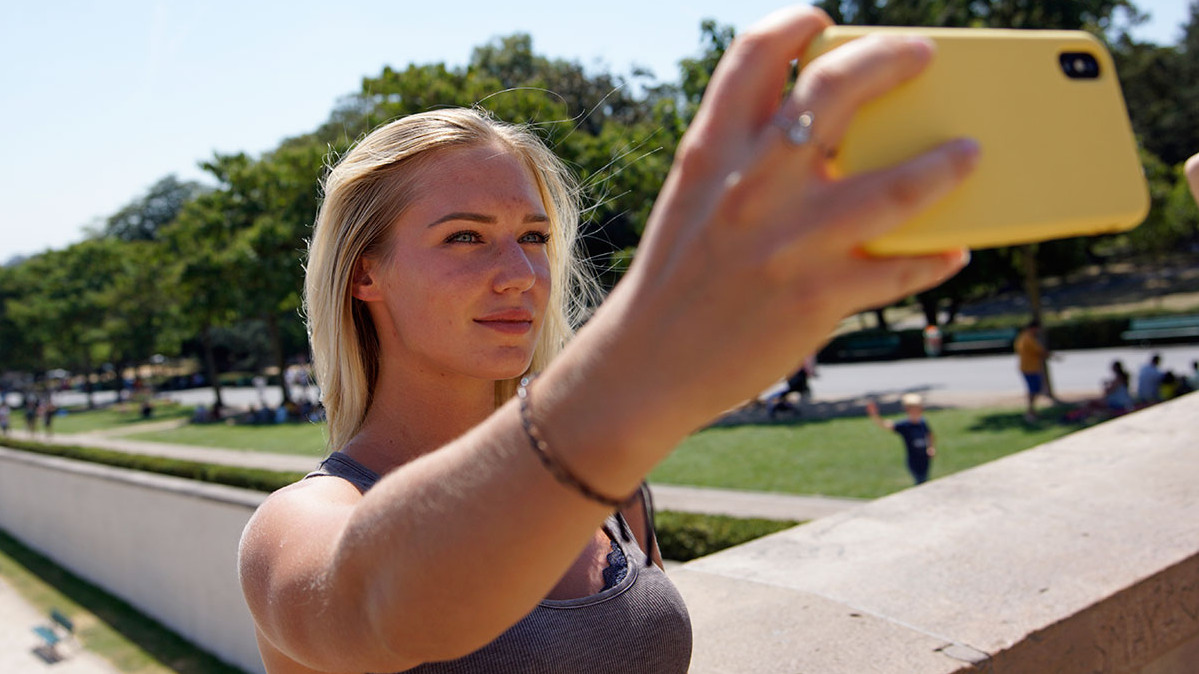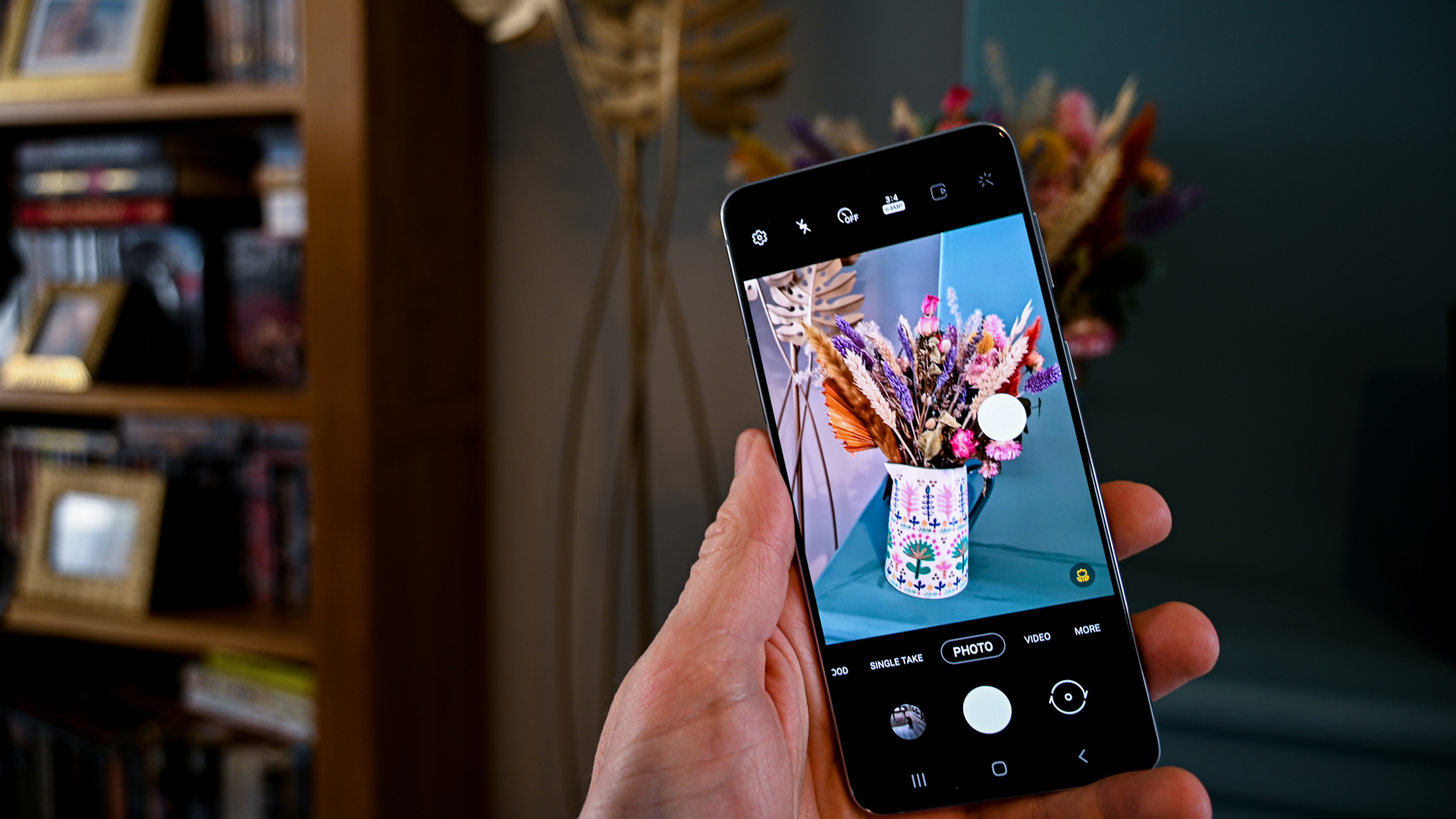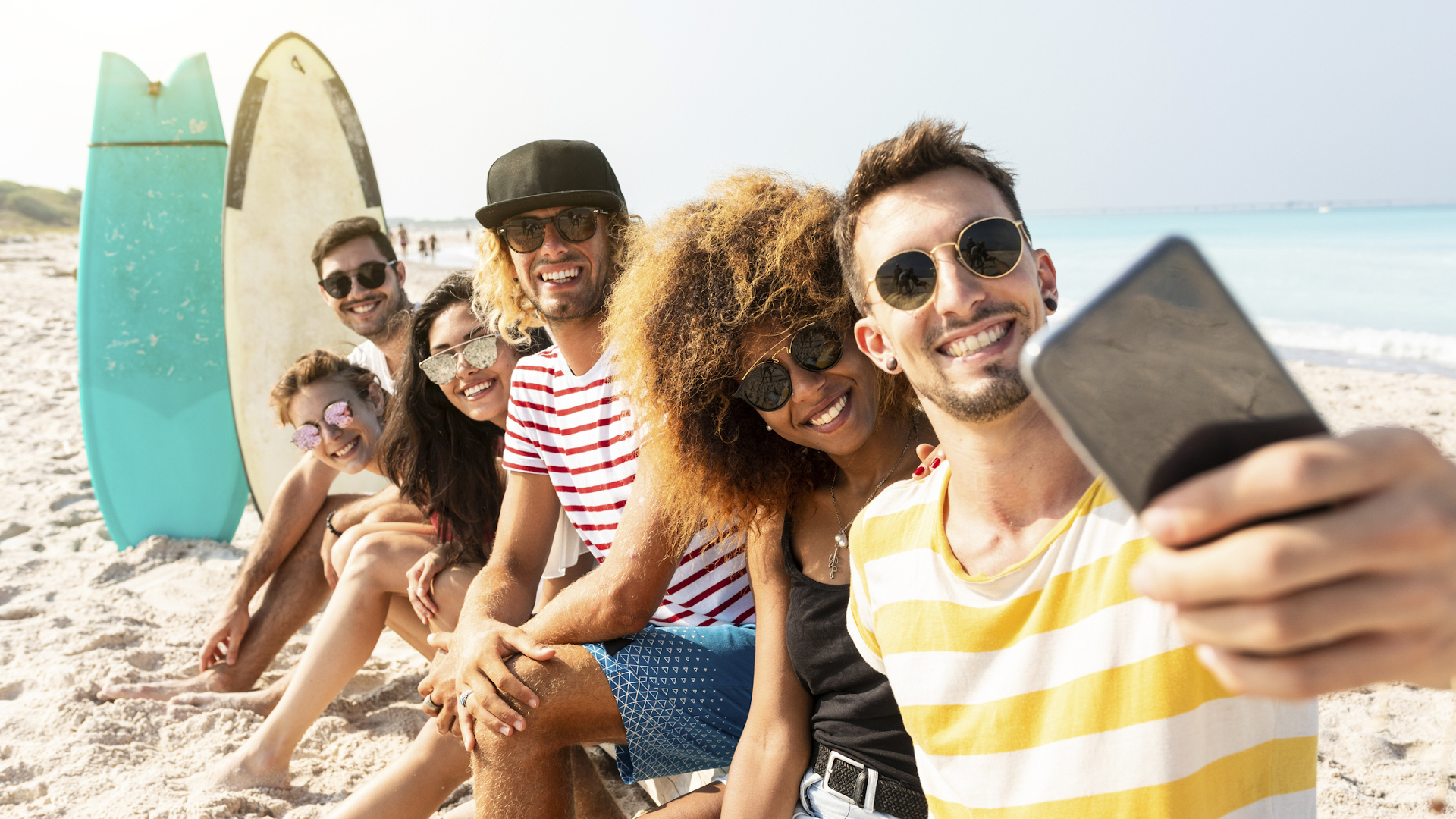Top 10 tips on how to take better selfies
Get better selfies no matter what phone you're using or where you are with these top tips.

If you want better selfies on your smartphone then you're in the right place. Right now you may have a phone full of failed attempts of the same picture as you've attempted to get that selfie just right. That's a perfectly natural way to get a photo right as it takes a lot of factors to reach perfection.
From the right lighting and framing to the background and angle, there's a lot to consider – and that's all before you even start to think about filters. So no matter what phone you have there are lots of ways to improve the end result of a selfie. Do it right and a budget phone could produce a better shot than a top-end model like the iPhone 12.
To help you out, we've put together these top 10 tips on how to take better selfies.
How to take better selfies
1. Lighting is important for better selfies
Lighting is not only important, it's everything when it comes to a selfie. Natural lighting is the ideal way to illuminate your image as it's less harsh than a flash and more even than an artificial light. Natural light leaves skin tones looking accurate and colors appearing rich - it'll even help with contrast to make the picture pop.
The rule here is to get the light behind the camera. That means it'll be shining on you in the selfie so you're well lit. It also means the camera isn't shooting into light where it will struggle to let in light, a bit like your eyes when you squint in the sun. If you shoot into the sun, the end result will be a blackened silhouette of a figure in shot.
Another tip is to hold something white, like paper, under your chin out of shot. This helps bounce the light up under you so a more balanced finish is achieved, with fewer line marks.

2. Get the angle right
A classic selfie pose is holding the camera at arm's length as far up and away as possible. This is popular because it works. When the camera is further away you get a wider frame to the image so your face isn't too big or unnaturally close. Being above can help to offer a more flattering angle which naturally makes you look better.
Sign up to receive the latest news, reviews, buying guides and deals direct to your inbox
Get the angle right and you don't even need to look into the camera - in fact it often looks better to turn slightly away. Just be sure to hold it still so you don't have wobble and blur. A top tip here is to use the volume down button to take the shot rather than fumbling for the on-screen shutter icon.
3. Use the background
Line up your shot before you take it so that the background is considered. Snapping something in the foreground is important but keep in mind it will be framed by what is behind. A white wall, for example, might be too bright and boring – or it could work if you have a lot of color in the foreground. It's about balance.
Often a long distance behind the subject works well as it gives a sense of depth and a feeling of space and freedom. With some cameras the selfie lens will even allow portrait mode to blur out that background for an even more professional DSLR camera style finish.

4. Avoid the flash in most cases
Natural light is best, as mentioned. But sometimes, like in a club at night, or on your sofa when watching Netflix, the light of the room just won't cut it. In those cases the flash, be it an LED or just the screen lit white, will help to bring out your face. Just keep in mind it will usually be a little white-washed and limited on color. For a better shot use a bigger light source, ideally.
For using apps, like Snapchat, look out for the flash icon. This is a lightning bolt in the case of Snapchat and this turns the screen white, as it takes the shot, to act as a flash. It works but don't expect a great result compared to natural light.
5. Keep shooting
Whether your phone has the memory for it or not, take lots of selfies. You can always delete the duds after. By taking lots you have options to pick from so that you end up with the result you were looking for. Change head position, change background location, adjust the camera height and angle and try different facial expressions.
When going through the shots it can help to favorite the ones you like, then go back through those and delete the ones you don't like. Repeat until you're left with 'The One'.

6. Use apps and filters
While many camera phones will have smart snappers, it can pay to use apps and filters to adjust the images after you've taken them. In the case of Snapchat it's often easiest to just shoot from within the app's camera system. But some cameras also have editing features built-in and filters available in the native camera.
After effects work can also enhance an image. Apps like Adobe Photoshop Fix, Facetune or Perfect365 are good options to try your editing skills for that perfect finish. Be warned though, the perfect image is tough to find so don't over-edit or you may lose the natural positives of the shot itself.
7. Be natural
All that said, going simple, not over thinking, and keeping it natural, can often produce the best results. A forced smile is never a good look, nor is an overly serious attempt to look like a model. But if you can find a natural smile or laugh, that's always going to enhance a selfie.

8. Shadow dodge
Yes, this is another lighting related tip but once that is so important it gets it own section. Shadows are your enemies when it comes to selfies. Shadows are unnatural looking on a face, especially if they are coming from objects around the subject. Even if you have the perfect light it can all be ruined by a pole casting a black line across your face.
One way to avoid shadows is to shoot in the shade. Since direct sunlight can sometimes washout a picture anyway, the shade can offer a good neutral start to work from.
9. Know your good side
It's an old classic but it's true, most people have one side that looks better than the other. Since you're likely angling your phone with one hand, it's likely you're going to favor one side of your face over the other. Make sure it's the good side.
Also be aware of uneven light and how that could potentially enhance your good side, or worst case, hide it.
10. Use a tripod or selfie stick
It's not cheating to use other equipment. A selfie stick or tripod can help here. Not only can these help give you a more balanced shot but they can also offer more distance. That means a bigger background which makes these ideal for landscape shots where you want to be included too.
Make sure your tripod is setup in a solid position and be aware of things like passing people and wind, to make sure your phone doesn't take a faceplant before capturing yours.
Luke is a veteran tech journalist with decades of experience covering everything from TVs, power tools, science and health tech to VPNs, space, gaming and cars. You may recognize him from appearances on plenty of news channels or have read his words which have been published in most tech titles over the years. In his spare time (of which he has little as a father of two) Luke likes yoga, surfing, meditation, DIY and consuming all the books, comics and movies he can find.

